Samyang T-S 24 mm f/3.5 ED AS UMC
8. Vignetting
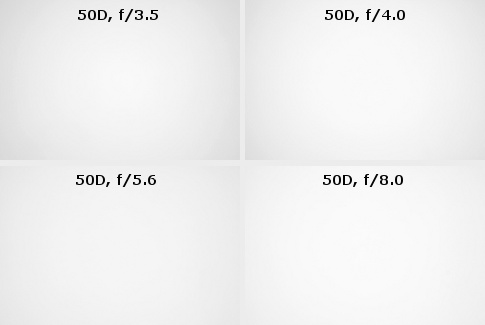
As you can notice there are no problems whatsoever and our measurements confirm it. At the maximum relative aperture the vignetting reaches just 12% (-0.38 EV). After applying f/4.0 that value decreases by just 1%. By f/5.6 the vignetting is very difficult to notice, amounting to just 7% (-0.19 EV).
Please Support UsIf you enjoy our reviews and articles, and you want us to continue our work please, support our website by donating through PayPal. The funds are going to be used for paying our editorial team, renting servers, and equipping our testing studio; only that way we will be able to continue providing you interesting content for free. |
- - - - - - - - - - - - - - - - - - - - - - - - - - - - - - - - - - - - - - - - - - - - - - - -
In the case of ordinary usage the Samyang shouldn’t be problematic at all also on full frame. Let’s see how it fares combined with the sensor of the Canon EOS 1Ds MkIII.
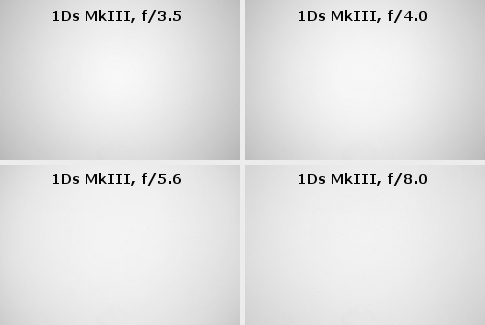
Indeed, for such a wide angle, offered by the lens, the vignetting can be considered low, moderate at most. At the maximum relative aperture the brightness loss in the frame corners is 25% (-0.83 EV). That value decreases to 23% (-0.74 EV) if you stop down delicately to f/4.0. After applying f/5.6 the vignetting is just 16% (-0.50 EV). By f/8 and f/11 the problem disappears completely because the results we got were respectively 13% (-0.40 EV) and 12% (-0.36 EV).
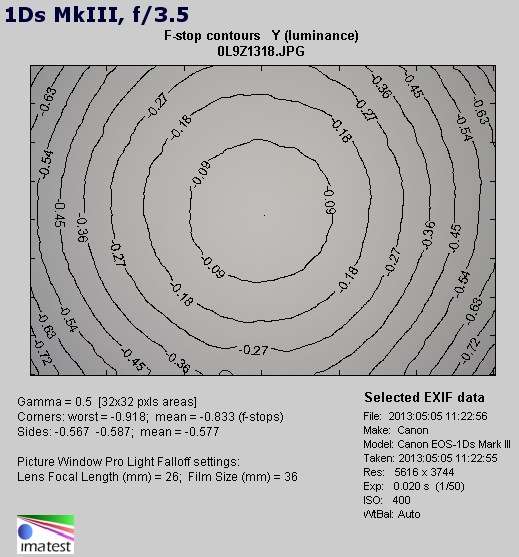 |
In the case of an ordinary lens here we would end this chapter here. As we deal with an extraordinary lens, we have to check how different combinations of tilts and shifts influence the light fall-off in the frame corners.
Downward shift (Shift = −12)
Compared to the normal performance there are noticeably more problems. At the bottom of the frame, in its corners and at the maximum relative aperture you lose over 1.5 EV of light. That value decreases with the stopping down. By f/5.6 the loss amounts to about 1.0 EV and by f/16 it is situated near 0.7-0.8 EV.
| Tilt=0, Shift=–12 | Tilt=0, Shift=–12 |
| f/3.5 | f/4.0 |
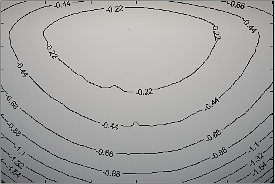
|
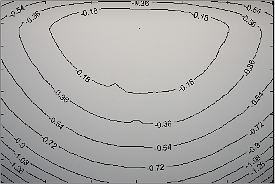
|
| f/5.6 | f/8.0 |
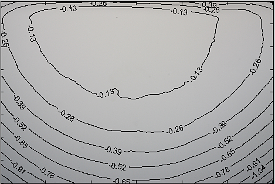
|
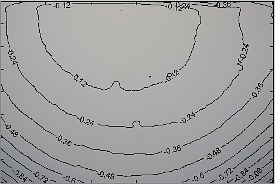
|
| f/11.0 | f/16.0 |
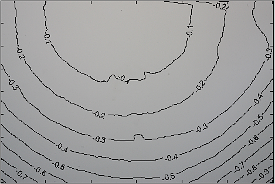
|
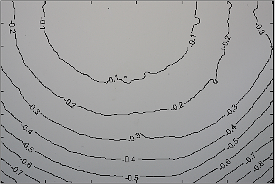
|
Upward shift (Shift = +12)
Very similar results you get if you shift the axis to the opposite direction. In that case at the maximum relative aperture in the upper corners of the frame you lose about 1.5 EV of light. By f/5.6 those losses will be a bit lower, amounting to 0.8-0.9 EV. By f/16 the results are once again similar, with the vignetting reaching 0.7-0.8 EV.
| Tilt=0, Shift=+12 | Tilt=0, Shift=+12 |
| f/3.5 | f/4.0 |
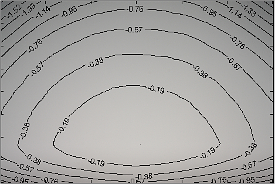
|
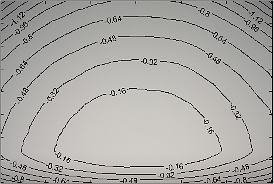
|
| f/5.6 | f/8.0 |
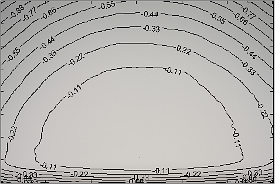
|
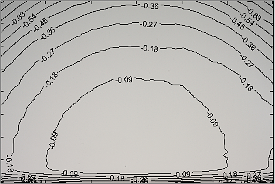
|
| f/11.0 | f/16.0 |
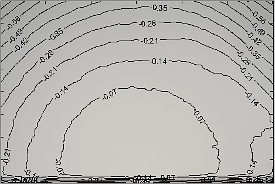
|
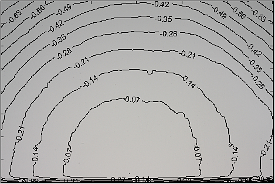
|
Sideways shift (Shift = +12, to the right)
The next stage is checking how sideways shifts along the frame influence the vignetting. In this case a fragment of the casing, responsible for the shift, should be turned through an angle of +90 degrees compared to the starting position (R=+90). As we move away form the optical axis we expect worse results – and indeed such results we get.
At the maximum relative aperture on the right side of the frame you lose even 3.2 EV. After stopping down the aperture to f/5.6 the vignetting in the right corners decreases to less than 2 EV. By f/16 its value reaches about 1.2 EV.
| Tilt=0, Shift=+12, R=+90 | Tilt=0, Shift=+12, R=+90 |
| f/3.5 | f/4.0 |
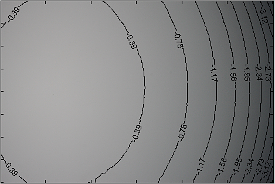
|
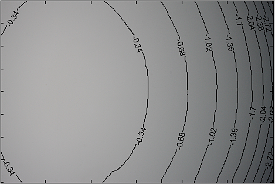
|
| f/5.6 | f/8.0 |
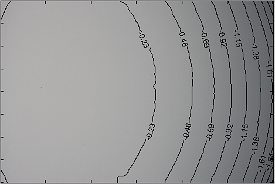
|
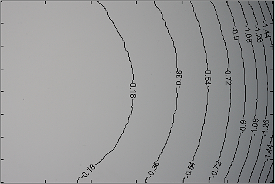
|
| f/11.0 | f/16.0 |
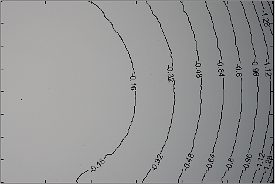
|
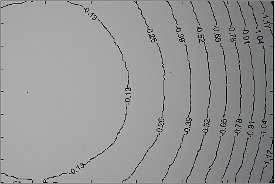
|
Sideways shift (Shift = −12, to the left)
As we checked what happens when you shift the axis to the extreme right we had to find out what results gives the shift to the opposite direction so to the extreme left (Shift=-12). This time the values are a bit lower. By all apertures you get results by about 0.2 EV lower than previously so the vignetting in the corners can drop to 3 EV at the maximum relative aperture and to about 1 EV by f/16.
| Tilt=0, Shift=–12, R=+90 | Tilt=0, Shift=–12, R=+90 |
| f/3.5 | f/4.0 |
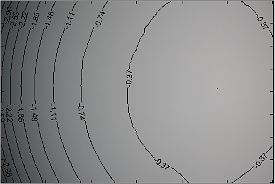
|
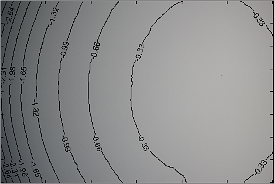
|
| f/5.6 | f/8.0 |
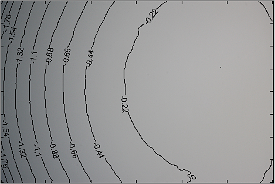
|
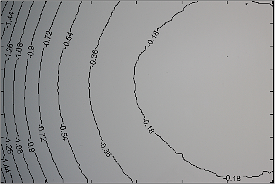
|
| f/11.0 | f/16.0 |
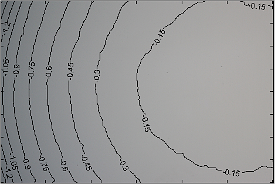
|
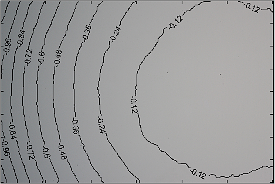
|
These are all available extreme ends shift combinations; it’s time to deal with tilts and their influence on the vignetting.
Sideways tilt (Tilt= 8.5L)
It’s the first variant – the sideways tilt along the longer side of the frame (Tilt =8.5L).
As you can see in thumbnails below the vignetting isn’t noticeably higher than when you take a photo with the lens in the starting position. Light fall-off reaches about 0.9 EV at most and then decreases noticeably on stopping down. From f/8.0 aperture the vignetting becomes imperceptible (below 0.3 EV) and also quite symmetrical so the influence of the tilt is negligibly small.
| Tilt=8.5L, Shift=0 | Tilt=8.5L, Shift=0 |
| f/3.5 | f/4.0 |
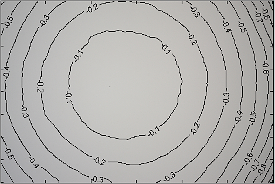
|
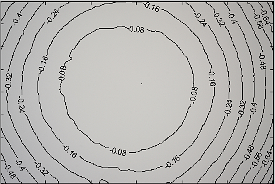
|
| f/5.6 | f/8.0 |
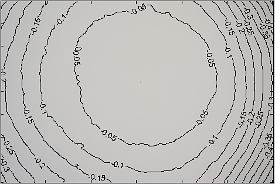
|
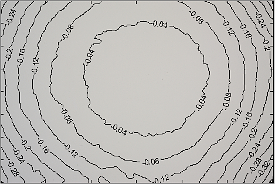
|
| f/11.0 | f/16.0 |
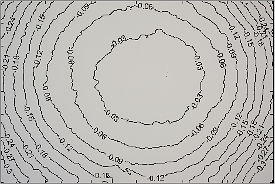
|
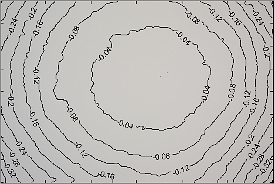
|
Sideways tilt (Tilt= 8.5R)
Let’s see what the situation is when you tilt the lens to the opposite direction (Tilt =8.5R). The vignetting moves to the other side of the spectrum for obvious reasons but otherwise the situation remains completely analogous to the previous one.At the maximum relative aperture the vignetting amounts to about 0.9 EV and it decreases to an imperceptible level by f/8.0, where it also becomes relatively symmetrical.
| Tilt=8.5R, Shift=0 | Tilt=8.5R, Shift=0 |
| f/3.5 | f/4.0 |
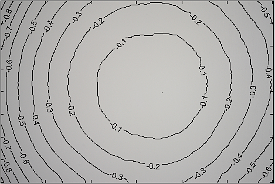
|
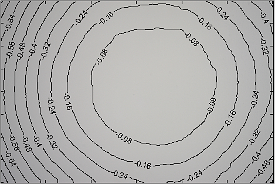
|
| f/5.6 | f/8.0 |
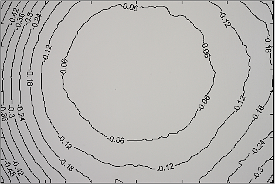
|
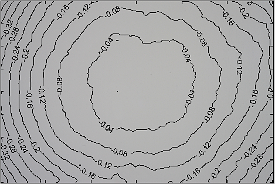
|
| f/11.0 | f/16.0 |
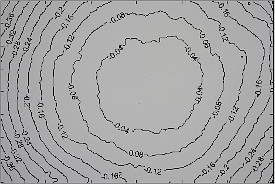
|
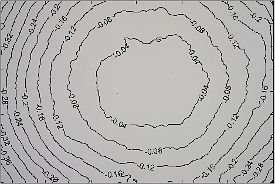
|
Downward tilt (Tilt= 8.5R, R=–90)
Turning one part of the lens through an angle R=-90 degrees you can move it along the shorter sides of the frame. Firstly we tilted the lens downwards (Tilt=8.5R).
The result of the tilt can be seen in the photo as a distinct darkening of the lower part of the frame – still, fortunately, not very pronounced. At the maximum relative aperture it reaches near 1.1 EV but by f/8.0 it is already almost imperceptible, getting to about 0.4 EV at most.
| Tilt=8.5R, Shift=0, R=–90 | Tilt=8.5R, Shift=0, R=–90 |
| f/3.5 | f/4.0 |
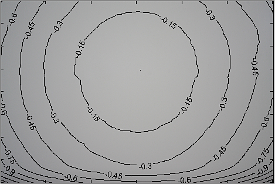
|
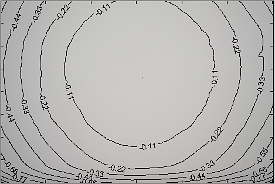
|
| f/5.6 | f/8.0 |
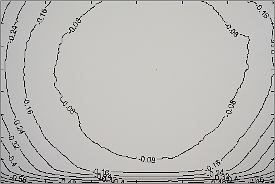
|
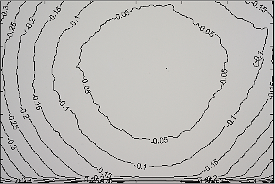
|
| f/11.0 | f/16.0 |
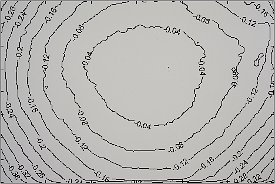
|
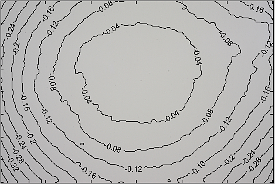
|
Upward tilt (Tilt= 8.5L, R=–90)
In this case there is no full symmetry as it could be observed in the sideways tilts variant. The vignetting results’ values and gradients differ a bit when it comes to up-down tilts.
The vignetting is lower for upward tilts than for the downward ones. At the maximum relative aperture it reaches a value of about 0.9 EV so is just slightly higher than that the lens had in normal photographic mode. Already by f/5.6 the problem becomes negligible (less than 0.5 EV) and by f/8.0 it disappears almost completely (0.3 EV) along with the disappearance of the non-symmetrical light layout.
| Tilt=8.5L, Shift=0, R=–90 | Tilt=8.5L, Shift=0, R=–90 |
| f/3.5 | f/4.0 |
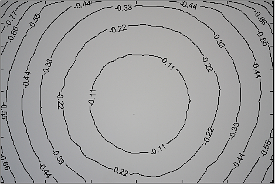
|
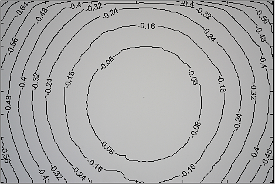
|
| f/5.6 | f/8.0 |
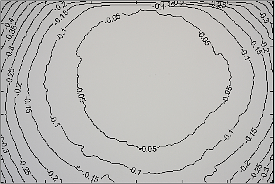
|
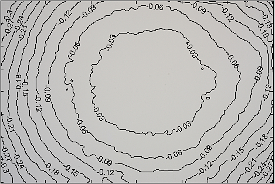
|
| f/11.0 | f/16.0 |
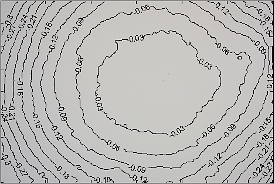
|
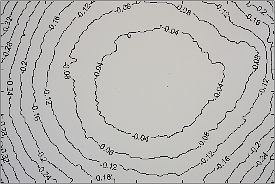
|
Now let’s progress to extreme situations which raise standards the most and are the most demanding. Of course we mean here the combinations of shifts and tilts both in the same direction.
Tilt and shift to the extreme left (Shift=–12, R=+90, Tilt= 8.5L, R=–90)
In the first case we will examine the combination of a shift and a tilt which work together along the longer side of the frame, moving the axis to the extreme left. Compared to our starting position we have to turn the shifting part through an angle of +90 degrees, set the shift at –12 and then turn through –90 degrees the part of the lens which is responsible for the tilt and incline it by a value of 8.5L.
The situation here is very interesting indeed. If you work with the maximum relative aperture and the light is gathered by the full entrance pupil its spread in the frame becomes asymmetric – in the left-hand corners there is less of it (1.7-1.8 EV) than in the right-hand corners (about 1 EV).
By f/5.6, although you still deal with a distinct asymmetry of the gradient, the losses of light in all the four corners are similar, amounting to 1.4-1.5 EV. Such an effect is of course due to the fact that you have a significantly higher gradient of the light decrease to the right.
By f/8.0 the gradient becomes so high that the corners in the right part of the frame lose already over 2 EV of light. The situation in left-hand corners improves so much that their light fall-off drops to a value of about 1 EV. By f/11, on the left side of the frame, you can notice further slight improvement (the loss of 0.8-0.9 EV) and on the right side we start to come near the image field border. The average brightness loss in the right-hand corners amounts to 2.3 EV and the worst result noticed (in the very corner) was 3.8 EV.
By f/16 the lack of frame coverage becomes evident. The average value in the right-hand corners gets to 5.6 EV of losses and the very corners are dark (Imatest computes their loss to be 12.5 EV).
| Shift=–12, R=+90, Tilt= 8.5L, R=–90 | Shift=–12, R=+90, Tilt= 8.5L, R=–90 |
| f/3.5 | f/4.0 |
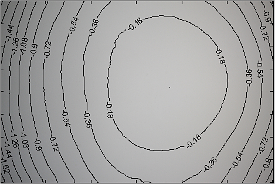
|
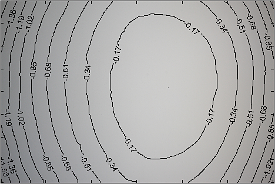
|
| f/5.6 | f/8.0 |
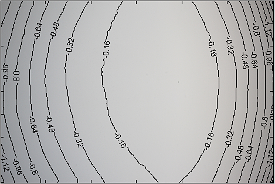
|
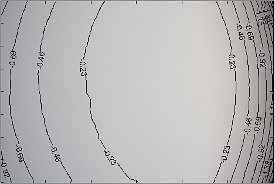
|
| f/11.0 | f/16.0 |
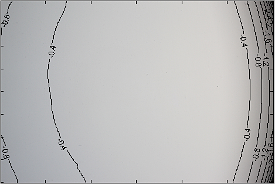
|
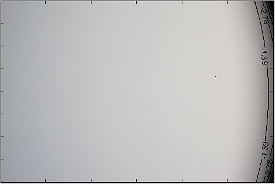
|
If you apply the extreme values of tilt and shift to the right, the results are similar (the differences never exceeding 0.2-0.3 EV) with the symmetric reflection of the light spread. In order to limit the length of this chapter, already quite taxing, we won’t describe it in great detail.
Extreme tilt and shift downwards (Shift=–12, Tilt= 8.5L, R=–90)
The next combination consists of tilting and shifting as far down the frame as it is possible. Here we applied the following values: Shift=–12 and Tilt=8.5L, previously turning the tilting part through an angle of –90 degrees.
Working at the maximum relative aperture you lose 1.1-1.2 EV of light in the bottom corners; the loss in the upper ones amounts to as much as 1.8-2.0 EV. By f/5.6 you can feel the lack of image field coverage of the upper part of the frame. As in the lower part the vignetting decreases near 0.6-0.8 EV, the upper corners darken by about 2.2-2.3 EV with the lowest result dropping to even 3.3 EV. By the f/8.0 the vignetting increases in the upper part of the frame – the average value in the corners amounts to –6.8 EV and the maximum value is –12.8 EV. Those results don’t change significantly by f/16 as already by f/11 you can admire the fragments of mechanical construction in their full glory so any additional stopping down doesn’t influence the overall situation at all.
| Shift=–12, Tilt= 8.5L, R=–90 | Shift=–12, Tilt= 8.5L, R=–90 |
| f/3.5 | f/4.0 |
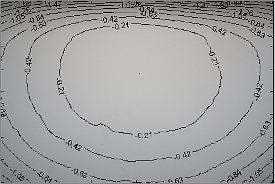
|
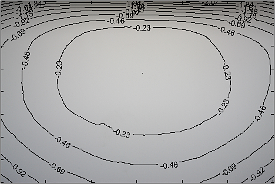
|
| f/5.6 | f/8.0 |
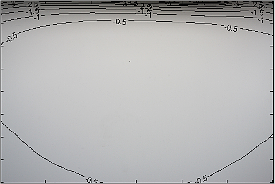
|
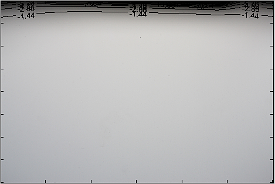
|
| f/11.0 | f/16.0 |
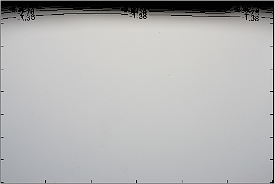
|
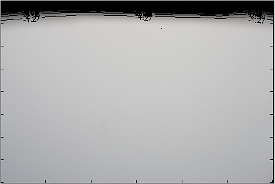
|
As the photo isolines, applied on the image, make the actual vignetting result a bit more obscure, especially after a significant stopping down, we present below an enlarged image of the complete frame by f/16. The construction elements of the camera-plus-lens set are clearly visible.
 |
Extreme tilt and shift upwards (Shift=+12, Tilt= 8.5R, R=–90)
If you reverse the situation, tilting and shifting upwards as far as it’s possible, the results won’t be just a symmetric reflection of the downward variation. In this case the vignetting influence is even more acute – perhaps any worsening is difficult to imagine after the results presented in the previous subchapter but still such is the case; the thumbnails below and our measurements prove it.
Already at the maximum relative aperture the problems are huge. The average loss of light across the whole area of bottom corners of the frame amounts to as much as 3.1 EV. As if it wasn’t enough the lowest value reaches 5.2 EV.
Already by f/5.6 the image in the lower part of the frame is outside the coverage area of the optical system. The average light fall-off is 6.7 EV and the lowest value, registered by us, gets to 12.7 EV. After further stopping down you don’t see any changes of the values quoted above but only sharpening of the borderline between black and white.
| Shift=+12, Tilt= 8.5R, R=–90 | Shift=+12, Tilt= 8.5R, R=–90 |
| f/3.5 | f/4.0 |
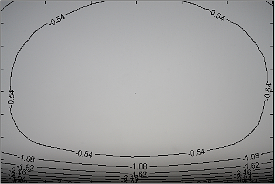
|
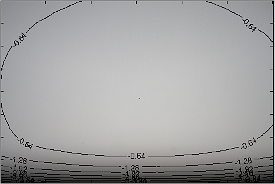
|
| f/5.6 | f/8.0 |
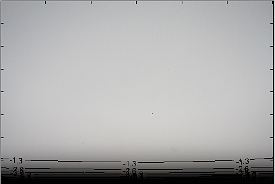
|
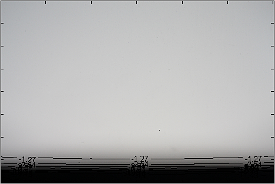
|
| f/11.0 | f/16.0 |
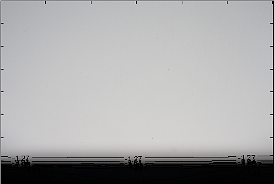
|
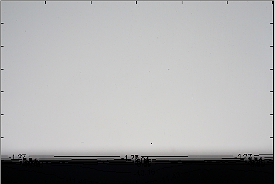
|
The photo below, taken by f/16, shows us how big part of the frame doesn’t contribute to the image registering.
 |
If you, dear Reader, didn’t give up after previous subchapters and managed to last out till this point, here is a piece of news: the possible combinations don’t end here. You can also start analyzing all variations involving a giving operation movement in one direction being contradicted by the movement of the second operation. In order to save time and place we are going to discuss in detail just one of such options.
Extreme left shift with extreme right tilt (Shift=–12, R=+90, Tilt= 8.5R, R=–90)
We decided to apply such a shift so the optical axis was moved as far to the left as possible (so you have to turn the shift part through +90 degrees and apply Shift=-12). That operation is contradicted by an extreme right tilt (in this case turning the tilt part throught –90 degrees and inclining it by 8.5R value).
The vignetting at the maximum relative aperture becomes really pronounced. The average value for both left corners of the frame amounts to as much as 3.7 EV and the worst possible result gets to 7.2 EV. You can say the left edge of the frame is completely useless.
By f/5.6 there is a noticeable improvement. The average vignetting value decreases to 2.6 EV and the worst result reaches 5.3 EV. On further stopping down those numbers get even better. By f/8.0 the average result is 2.1 EV and the worst one amounts to 4.1 EV; by f/11 the average vignetting in left-hand corners is 1.7 EV and the maximum value gets to 3.3 EV; by f/16 you see an average result of 1.4 EV and the maximum one of 2.6 EV. In this case the image on the very edge can already be deemed useful.
| Shift=–12, R=+90, Tilt= 8.5R, R=–90 | Shift=–12, R=+90, Tilt= 8.5R, R=–90 |
| f/3.5 | f/4.0 |
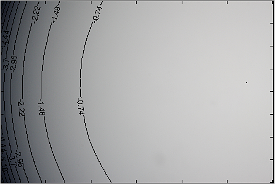
|
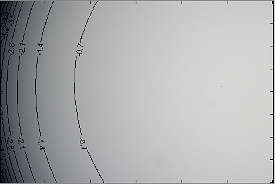
|
| f/5.6 | f/8.0 |
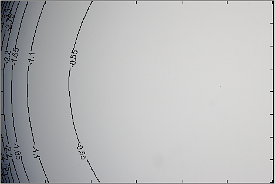
|
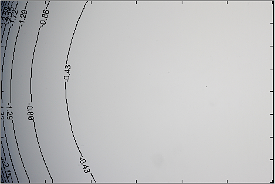
|
| f/11.0 | f/16.0 |
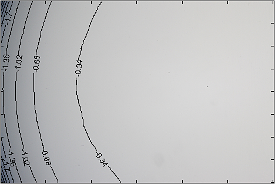
|
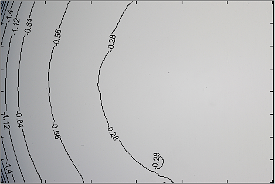
|
As a kind of bonus for all those who had enough patience and stamina to last till the end I might add that this chapter is an excellent illustration why I wasn’t exactly eager to test T-S lenses. A profound analysis of only the vignetting part takes as much work as a full test of a “prime” lens designed for smaller sensors..






